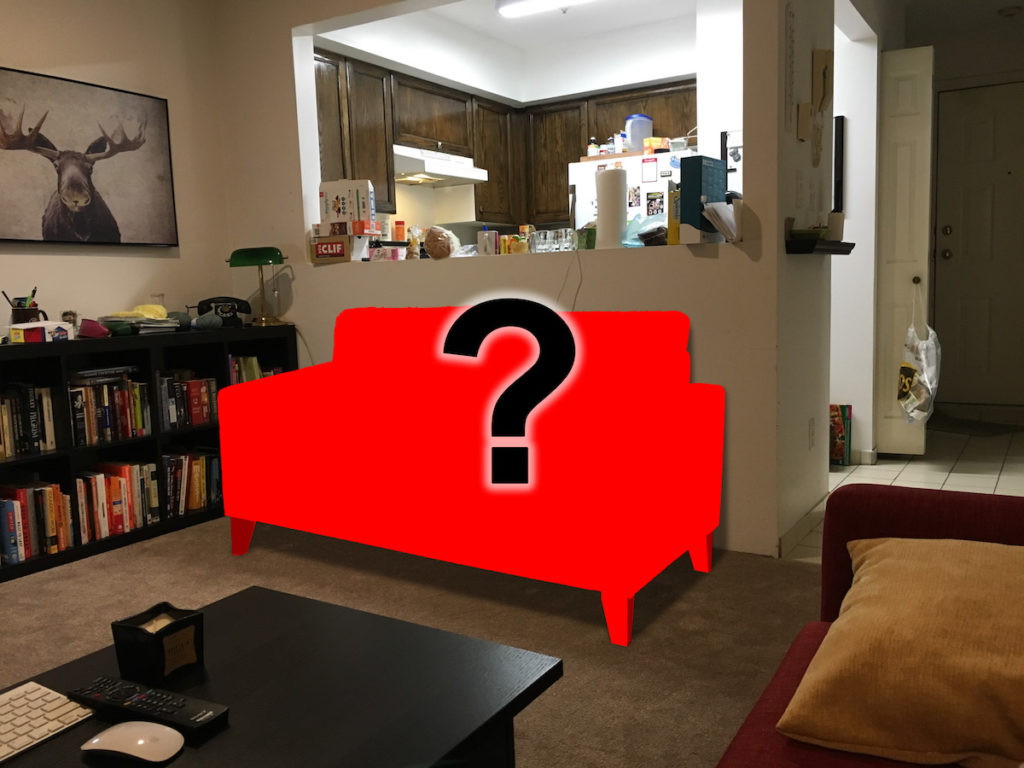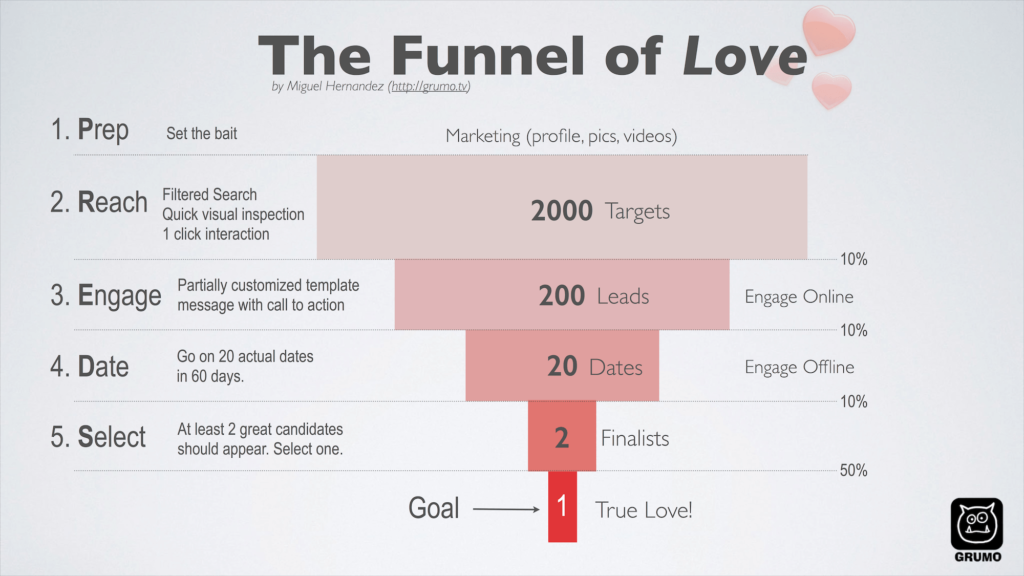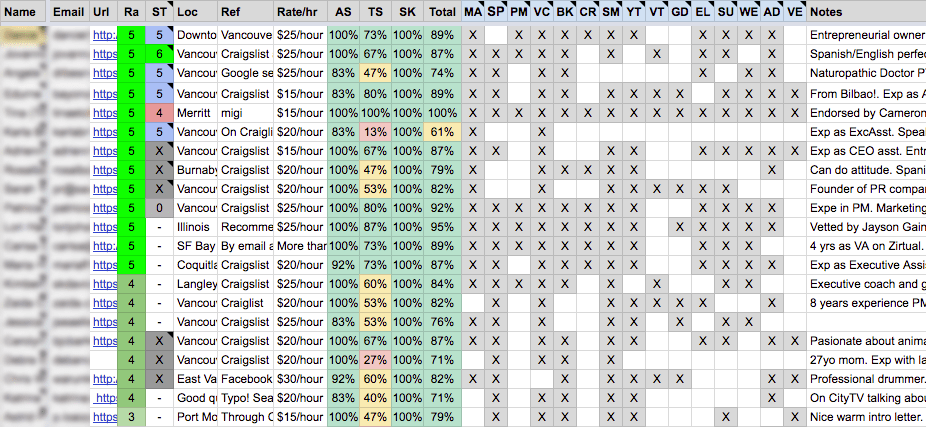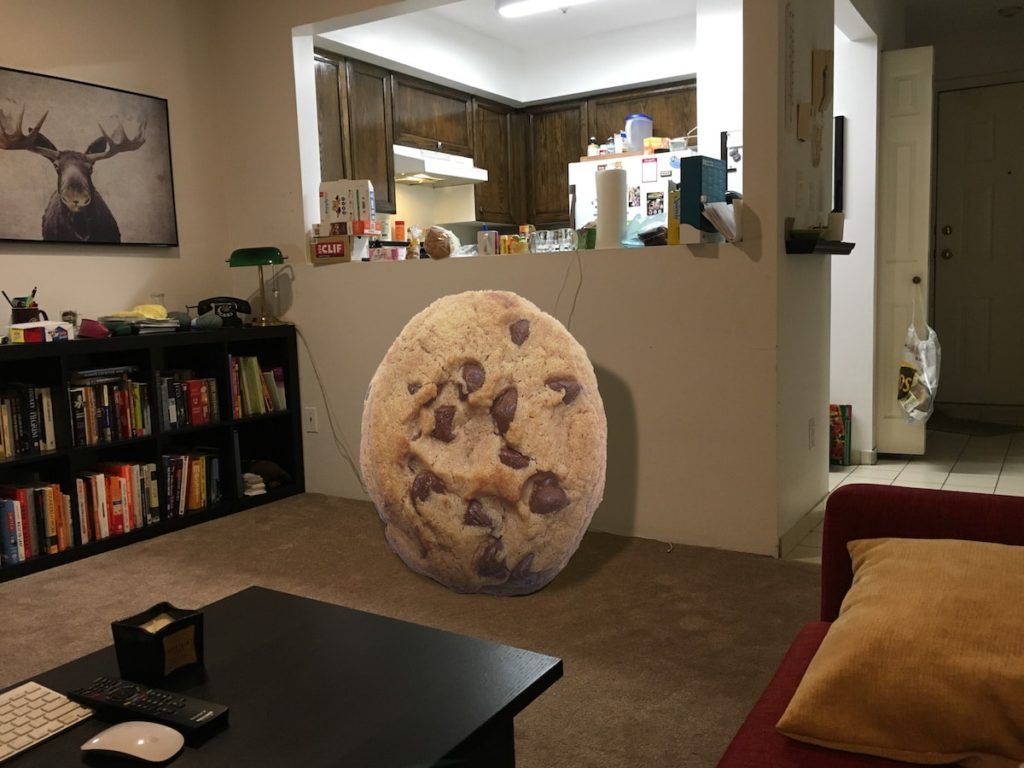Decisions, decisions, damn decisions.
Our entire life depends on them.
Make the right ones, you’ll win. Make the wrong ones you’ll lose.
Make a stupid one and you could die.
I’ve been cursed with the inability to make quick decisions.
The higher the stakes, the harder to make the decision.
I’m writing about making decisions because right now I’m stuck making a decision.
It’s far from a life-death decision but one I feel is perfect to illustrate how my brain operates.
Here it comes… I’m stuck deciding which loveseat to buy.

I know, I know. Who gives a crap except me (and my wife) ?
It’s not about the what but about the how, about gaining a Grumo insight into the process of making decisions.
The loveseat decision is just the vessel we’ll use to explore a question that affects every human every single day of their lives.
How do we make decisions?
All decisions go through 5 stages:
- Realization: this is the moment when you realize you need/want/must make a decision.
- Evaluation: During this stage you evaluate all possible options to find the optimal one based on the available constraints (urgency, opportunity-cost, availability, stakes, etc.)
- Selection: Eureka! this is the moment when you finally choose a course of action (ie: pick an option or decide not to move forward).
- Execution: this is the stage where the decision is implemented. Where the rubber meets the road so to speak.
- Reflection: this is the stage where you reflect on your decision and assess how good/bad it was.
Here is how these stages have played out so far in the process of choosing the perfect loveseat.
- Realization: we never use our huge 10-foot projection screen because we don’t have room for a couch facing the screen. Solution = remove dining table (which we never use) and replace with a small 2 seater sofa (loveseat) – Status: Completed
- Evaluation: 1. Research loveseats that meet all our criteria (less than $1000, not wider than 60″, not deeper than 35″, cute, ideally brown leather). 2. Photoshop top 10 candidates into a photo of our living room – Status: Completed
- Selection: Choose one. – Status: STUCK!
- Execution: Buy it and get it delivered. – Status: Pending
- Reflection: A: it looks fantastic and now we use the projection screen every week! or, B: it looks like a big dog poop and we don’t like to watch movies seating on poop. Return it and go back to step 2. – Status: Pending
Why Do We Get Stuck Making Decisions?
One of the main reasons for getting stuck is having too many options to choose from.
We live in a society that offers such an overwhelming surplus of choice that suffering from decision anxiety has become commonplace.
This First World malady was well researched and documented by American psychologist Barry Schwartz in his 2004 book “The Paradox of Choice – Why More Is Less“. In the book, Schwartz argues that eliminating consumer choices can greatly reduce anxiety for shoppers.
Here is how this anxiety manifests in my brain when, even after painstakingly photoshopping 10 loveseat choices, I still can’t decide which one to get.

Option No.2 seems to be the strongest contender for now. What do you think?
How can we make better decisions?
On a typical day we will make hundreds of small decisions; like what socks to wear, or which empty seat to pick in the bus to work.
The lower the stakes, the easier is to make a decision. And the more often we make a similar decision, the faster we get at making it.
Our decision making ability behaves like a muscle. The more you use it, the stronger it becomes.
Because making decisions is one of the biggest sources of anxiety for me, I’ve developed systems to simplify the process.
Not surprisingly, the most effective decision-making aid I’ve come up with is to reduce the amount of choices.
The less choices, the less time spent evaluating them.
The ideal amount of choices is ONE. When you only have one option to choose from making decisions is super easy!
This is exactly why I have been wearing the same Grumo t-shirt for over 6 years.

Only one choice = no time wasted evaluating options (Stage 2 and 3 gone!).
However, decision-making difficulty gets compounded when the stakes are high, the choices are many, and the available time to make the right decision is very limited.
Here is what the decision-making difficulty equation looks like:
Decision Making Difficulty = Stakes x Choices / Available Time – (DMD = S x C / Ta)
Based on this equation, here is what it takes to reduce decision-making difficulty.
Step 1: Reduce Stakes: break down big decision into smaller easier-to-make decisions. i.e.: try before you buy.
Step 2: Reduce Choices: introduce an evaluation criteria (constraints) to eliminate as many choices as possible.
Step 3: Set Time Limit: the more time you have to evaluate your choices the more likely you’ll make the right decision. That’s why all great negotiators never make rushed decisions and insist on buying more time.
However, spending too much time deciding can be detrimental as well.
There is an optimum amount of time to be spent on every decision. Too little time and the likelihood of making the right choice diminishes. Too much time spent deciding and the upside of making the right decision can be rendered null by coming in too late.
Regardless of your decision-making strategy, higher stake decisions will always be harder to make.
Choosing a loveseat is relatively low stakes compared to life changing decisions like who to marry or which country to live in.
It’s considerably lower stakes than buying a house, choosing a university, or hiring a CEO. But it’s one of those decisions which has long enough implications (getting stuck with a piece of furniture for many years) that devoting some extra effort seems warranted (6 hours photoshopping options).
So how can I get unstuck choosing a loveseat?
Let’s apply my own framework:
Step 1: Reduce Stakes: buy from a place that let’s you try their furniture for a couple weeks. This means eliminate the option of buying used furniture (Craigslist)
Step 2: Reduce Choices: Introduce size, price, and style constraints (done). Pick a maximum number of final candidates (10, done). If still stuck, ask for a second opinion (what do you think I’m doing with this email? 😉 )
Step 3: Set Time Limit: 2 weeks max (done).
Ahh, I feel better already. I know I’m closer to making a decision. My cortisol levels lowering, the First World anxiety diminishing… I can see the perfect loveseat peering at the end of the tunnel. What else can I ask for in life!
Conclusion: Fall in love with the enemy
As I explained on a previous post, I hate making decisions because it means the automatic annihilation of all other possibilities.
But since making decisions – be it hard ones or easy ones – it’s an inextricable part of life, I may as well do all I can to get better at making them.
That’s why I enjoy the process of coming up with new ways to help me make the best possible decision.
Like photoshopping loveseats to help me visualize what they would look like placed in my home.
Or coming up with a statistical approach to help me find the best possible partner online…
 …Or using a combination of online forms, ranking systems, and spreadsheets to find the best possible virtual assistant…
…Or using a combination of online forms, ranking systems, and spreadsheets to find the best possible virtual assistant…

…Or a 10 criteria system to select the best name for a website…

If arriving at a decision is the destination, the process of getting there is the journey.
So why not make that journey as fun as possible?
And if after all this effort, I fail to make a decision…
Oh well… there is always this option…

Peace, Love, and Cookies,
Miguel

P.S.: Hablas español? I know many of you are from Spain or Spanish speaking countries and struggle a bit trying to translate my emails. Last week, I was interviewed by Oscar Martin from MisIngresosPasivos. It was a fun interview and you can watch it in Spanish HERE.
P.2: The 2nd episode of the Grumo Poscast is live HERE.
P.3: If you missed last week’s email you can read it HERE.
Did a homo sapiens forward this article to you?
That human was very sapiens indeed. If you don’t want to miss my upcoming articles make sure to subscribe to them HERE.
Leave a Reply